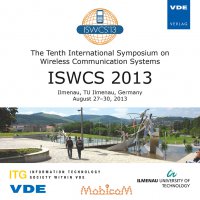Energy-Efficient Connectivity in Hybrid Radio-Optical Wireless Systems
Conference: ISWCS 2013 - The Tenth International Symposium on Wireless Communication Systems
08/27/2013 - 08/30/2013 at Ilmenau, Deutschland
Proceedings: ISWCS 2013
Pages: 5Language: englishTyp: PDF
Personal VDE Members are entitled to a 10% discount on this title
Authors:
Chowdhury, Helal; Ashraf, Ikram; Katz, Marcos (Centre for Wireless Communications, University of Oulu, Oulu, Finland)
Abstract:
This paper analyzes the feasibility and potential benefits of using hybrid radio-optical wireless systems. Potential benefits are identified as service connectivity and energy efficiency of battery operated device in indoor environment. Moreover, cooperative communication using optical relays are also introduced in order to increase the coverage and energy efficiency of battery operated device. The connectivity and energy efficiency of such hybrid radio-optical cooperative communications are characterized by optical line of sight (LOS) channel model, relay selection algorithm, mobility of user, semi angle at half power of the light emitting diode (LED) and the field of view (FOV) of the photo detector. Simulations have been performed in order to evaluate the connectivity and energy efficiency performance of such homogeneous and hybrid networks. Simulation results reveal that user connectivity and energy efficiency depend on user density, coverage range ratio between single-hop and multihop, relay probabilities and mobility of the user. Finally, it can be concluded that hybrid radio-optical wireless systems have a positive impact on the performance of user connectivity and energy consumption.


